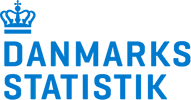Ukraine
The migration from Ukraine to Eastern Europe has been considered a quite new phenomenon that started even before the Russian invasion in February 2022. Yet, the latter event has accelerated it. However, current events in Ukraine cannot be understood in a vacuum. The story of Ukrainian migration patterns before the invasion provides a context by which one may understand some of the dramatic migration shifts. Some of the places, people, and motivations mentioned in this storymap might have been heavily affected by recent events. The story documents a broader history, migration drivers, and trajectories of Ukrainians’ migration during the peaceful and turbulent times just before the war began, and it provides comparative input for future studies.
Press here to see a storymap in a full screen
MMO Seminar – Ukrainian Internal and External Migrations
The Russian aggression on Ukraine has led to the largest forced migration flows in Europe since WWII. The war causes humanitarian catastrophe and refugee crisis, as millions of people search for safety outside of Ukraine. The UNHCR estimates that during the first nine days over 1,5 million people fled Ukraine, and the number may quickly increase to 4 million if the war continues. Most refugees went to the neighbouring countries and the majority, over 57%, crossed the border with Poland. While the war has disrupted previous patterns of migration from Ukraine and it is hard to predict how the situation will unfold, it is important to discuss the migration crisis from both current and past perspectives.
In the first part of the seminar, the key findings from the FUME project case study are briefly presented. The case study was carried out in 2021 among internal migrants who had come to Kyiv during the last 15 years. The aim of the research was to explore the pre-war modalities of Ukrainian migrations and the complexity of interrelations between historical, economic, cultural, social and demographic factors in the migration decision-making. Although work and education used to be the main motives of migration, political factors have played a role since 2014 and the Russian annexation of Crimea and the war in the Donbas region. Social networks turned out to be crucial in shaping both internal and international paths of migration. In the current crisis, the presence of the Ukrainian diaspora in many European and non-European countries (estimated globally by UNHCR at 6,1 million) will surely play a significant role in the migration decision-making, and in the refugee destination settlements, in particular.
The second and major part of the seminar is devoted to a discussion of the current situation of refugees from Ukraine in Poland. The perspective of the cities of Krakow and Warsaw are also explored to show local efforts to help refugees and to discuss emerging challenges.
The seminar is organised by the Multiculturalism & Migration Observatory, a joint initiative of the Municipality of Cracow and Cracow University of Economics. ↗ Find more information about the seminar here.









